Priscilla's
Bird Photography
Photos from personal trips AND trips with
Birds of Oregon and General Science, (BOGS)
in association with Eugene's Celeste Campbell Center
Priscilla Sokolowski
Eugene, OR



BOGS Checkermallow access: Meadowlark Prairie Wetlands
Feb 26, 2015; Trip Report
Our destination on Thursday Feb 26, was the portion of Meadowlark Prairie Wetland made available from the Checkermallow Access. These names are all well chosen; because checkermallow is the name of a native plant found in this area, and Meadowlarks are found year-round in this wetland area. They are found in flocks during the Winter, and we had no problem finding them.
In fact we began hearing Meadowlarks calling as soon as we got out of our cars. We quickly spotted some near the water-carrying channel which runs alongside the parking area. But that wasn't the end of it, because we got some even nicer looks at some once we were up on the bike path. When we returned at the end of our walk, again we had some good looks at these beautiful birds.

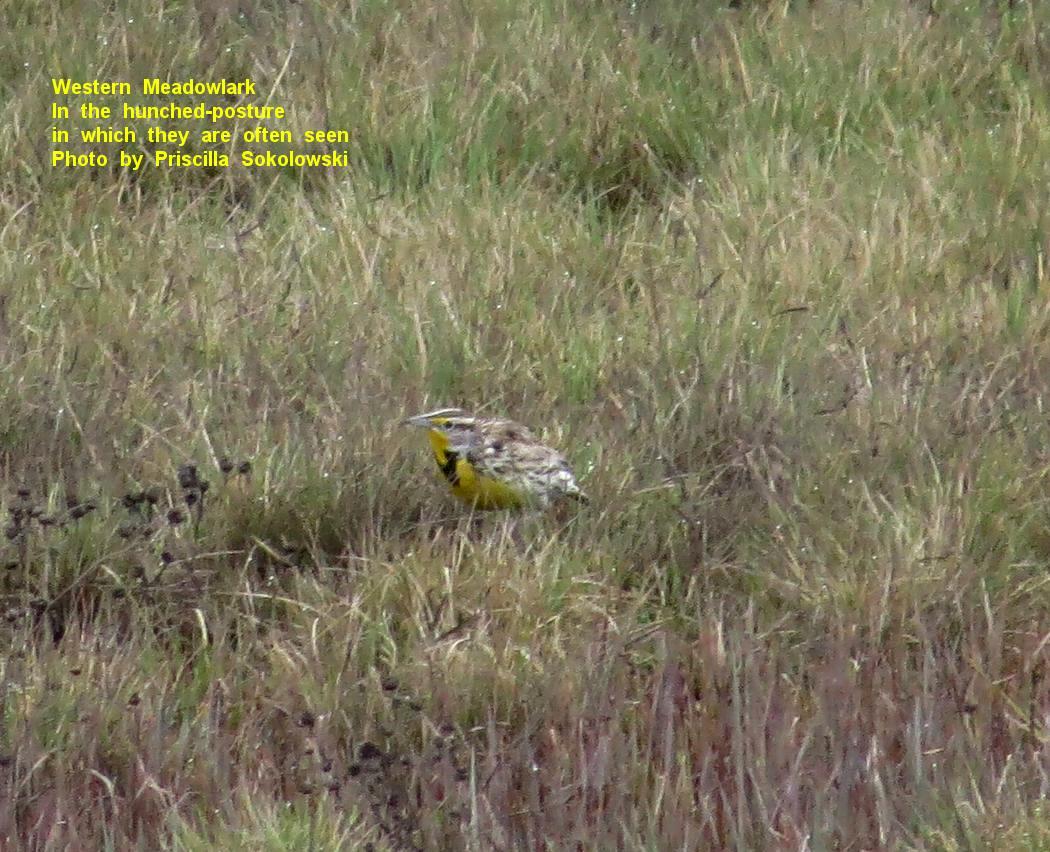


Another bird we saw right away while looking at the Meadowlarks along the channel, was a Mourning Dove. It seems like I see Mourning Doves much less often since the Eurasian Collared Dove had become so common. Although I remember there was a short period of time in late Spring or Summer when I saw small groups of Mourning Doves in several places around town. Perhaps those were families with newly fledged birds.

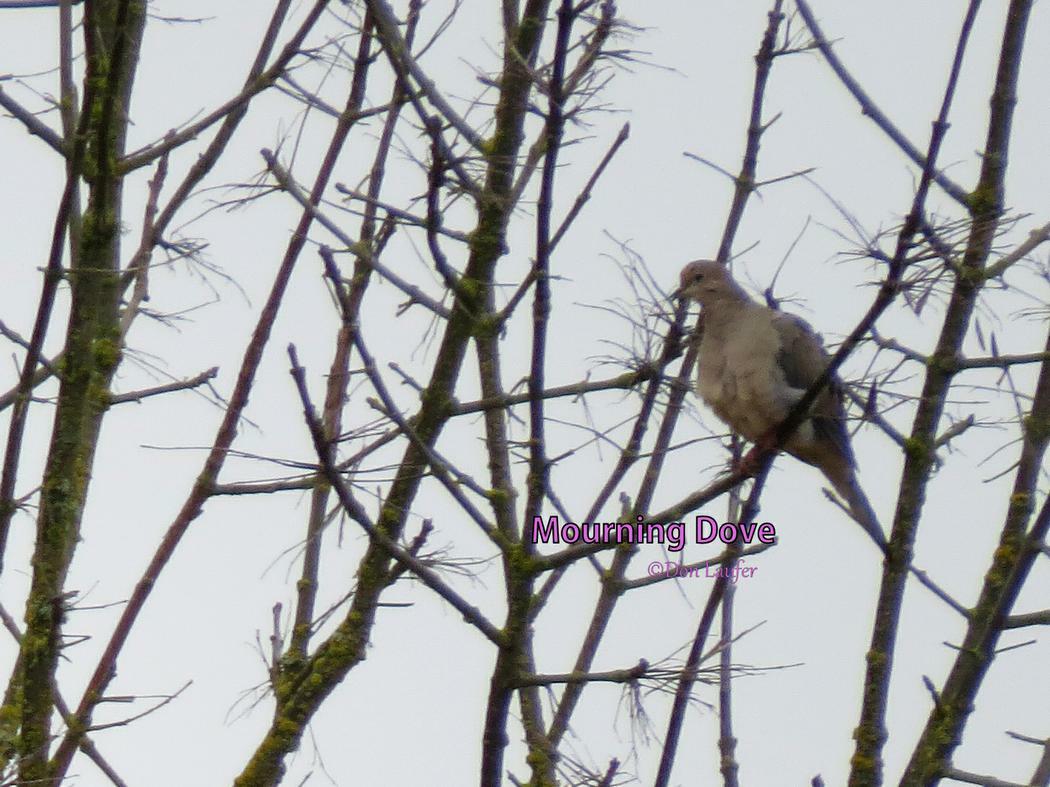
We had a lot of action right away and it continued unabated for quite a while. As soon as we got up onto the bike path, right away we saw an American Kestrel. This bird was perched on top of one of the lamp posts which line the entire bike path throughout all of Meadowlark Prairie. As we walked further down the path, each time we got close to the post the Kestrel was on, it flew ahead to another one. This was repeated again and again for most of the walk.
Although it was absent for a short while, as we began walking back, again the Kestrel flew ahead of us from one light post to another, all the way back to the parking lot. I got my best photograph of this bird just before we walked down into the parking lot to go home. Someone must have paid this bird extra, because the only place during this trip that I didn't see this bird was in our cars as we drove to and from the park.

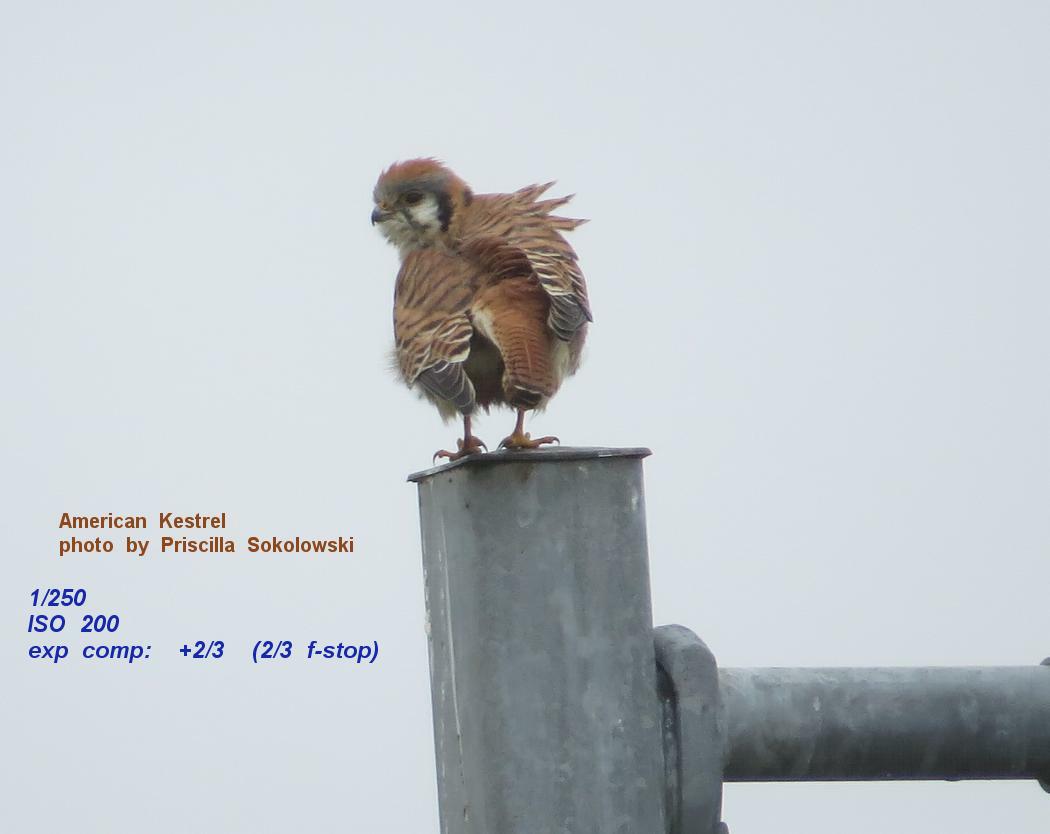

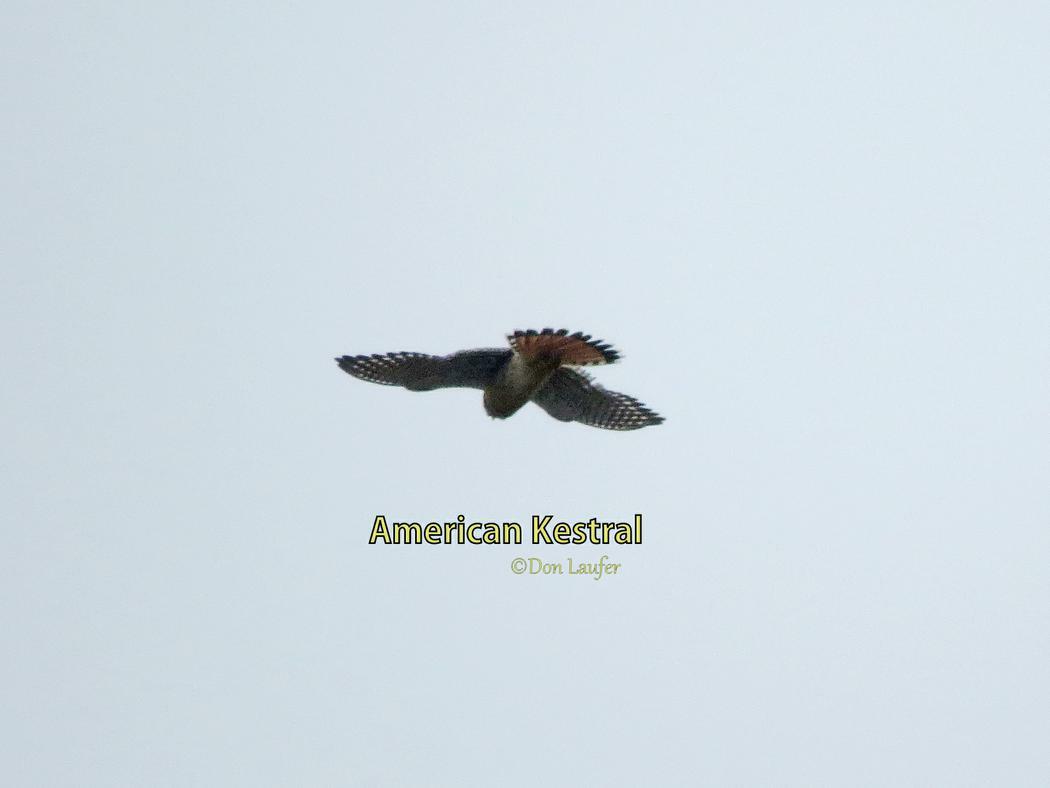
Very early on the path a Red-tailed Hawk flew up into a tree across the channel from us. This hawk has white markings suggestive of a "V" on its back.
A few Northern Harriers were seen flying low over the fields looking for food over the course of our birdwalk. One landed close enough to see some details.





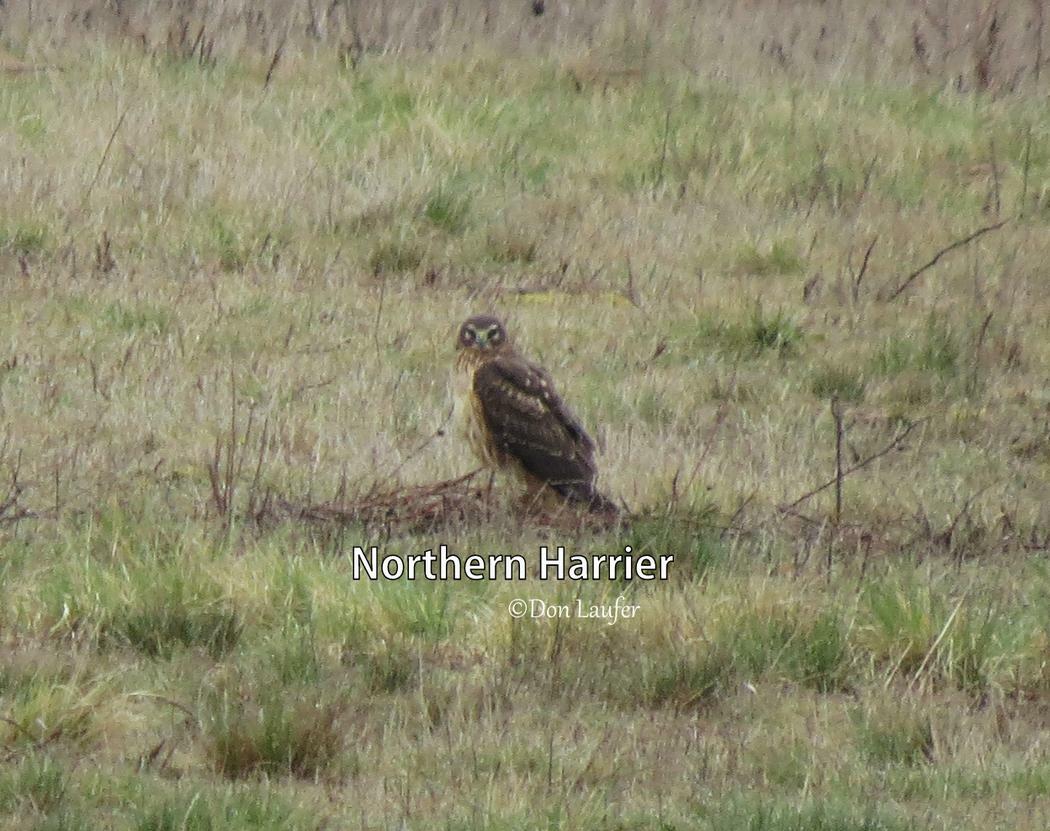
Northern Pintails seem to be everywhere we go at this time of the year, and Meadowlark Prairie proved to be no exception. Red-winged Blackbirds are another bird seen on almost every trip lately.
Cackling Geese flew over in various size flocks at varying distances throughout the time we were at Meadowlark Prairie.

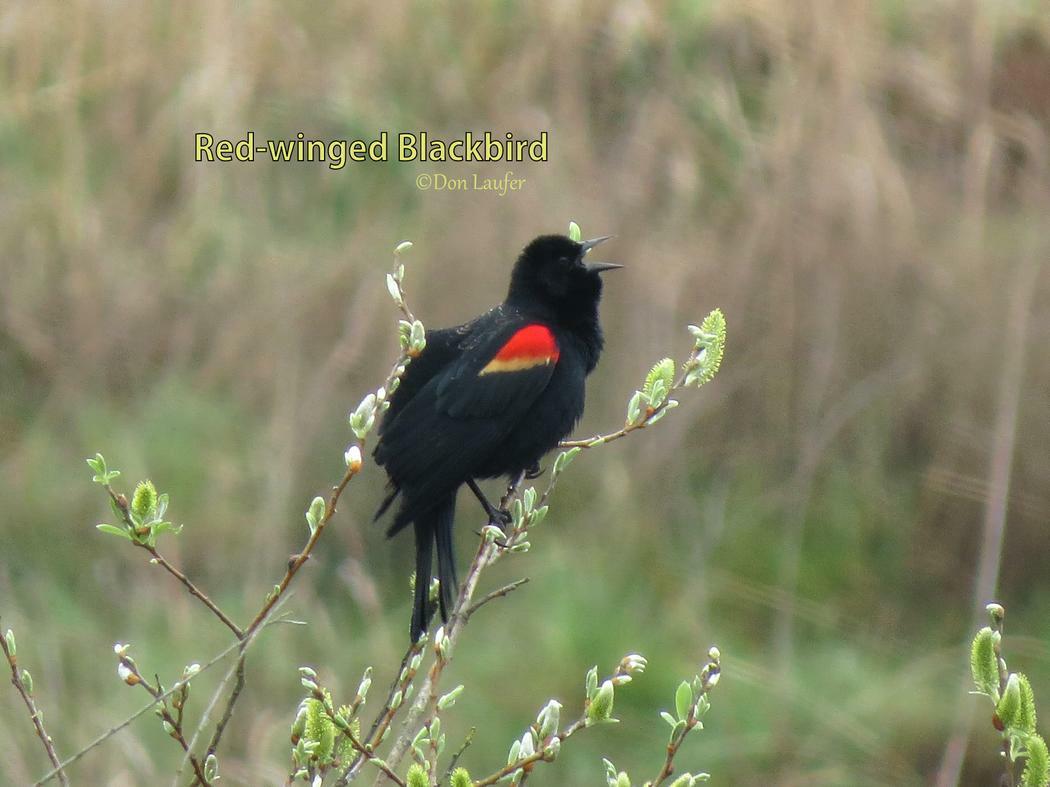



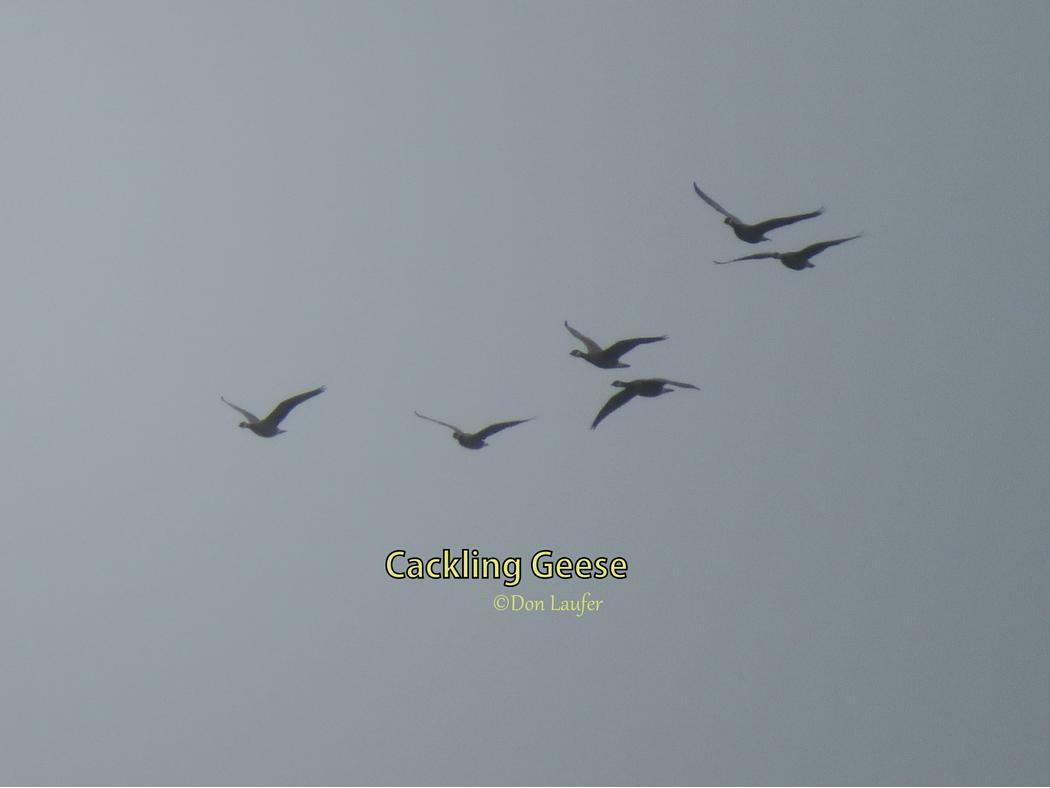


There was a Northern Flicker in a small tree right next to the path, and it stayed there as we stopped and looked at it. This bird was all puffed up as you can see in the photo. There was some talk about it being an intergrade or a full Yellow-shafted Flicker, but the shafts of this birds feathers look salmon colored to me, not yellow. Also there is no red crescent on the nape - which would be present on both male and females of the Yellow-shafted race. Lastly there are no black malar stripes (mustache) which a Yellow-shafted male would have. A female would have none and a male Red-shafted bird would have red malar stripes. This bird is apparently female so we get no information from the malars.
Lastly there are no black malar stripes (mustache) which a Yellow-shafted male would have. A female would have none and a male Red-shafted bird would have red malar stripes. This bird is apparently female so we get no information from the malars.

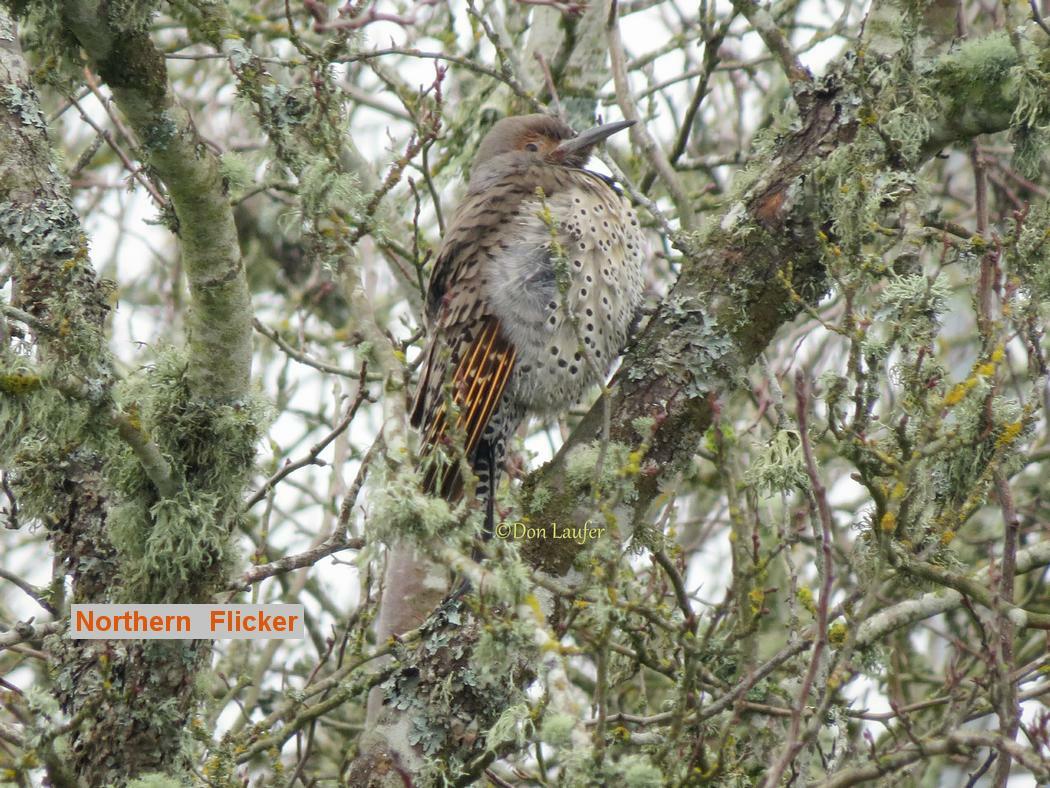
Rick Ehrens once told us that Yellow-rumped Warblers are the most common warbler in our area during the Winter. We seem to see them on every bird walk of this season
This one was taking a sharp look at us when Don snapped this photo. I like how clearly visible the broken (incomplete) eye-ring is.


This is the channel which runs alongside Roosevelt, and drains the wetlands around EWEB; and also drains areas further south and east, including the Stewart Pond area and from as far east as Seneca Rd and West 5th.
Just around the distant bend, it flows into the Amazon channel, which comes from further south along West 11th.
Our group worked for a while on figuring out what the Ducks were way out towards the end of the visible part of the channel. Photographs helped assure us that they were indeed Ring-necked Ducks.
In the following photo, we are looking west across Meadowlark Prairie. The building with the tall fir trees is the Lane County Humane Society on Greenhill Road. The Greenhill parking area for Meadowlark Prairie is right across the street (towards the camera). The strip of land behind those five tall fir trees is public land all the way up to the top of that distant ridge.

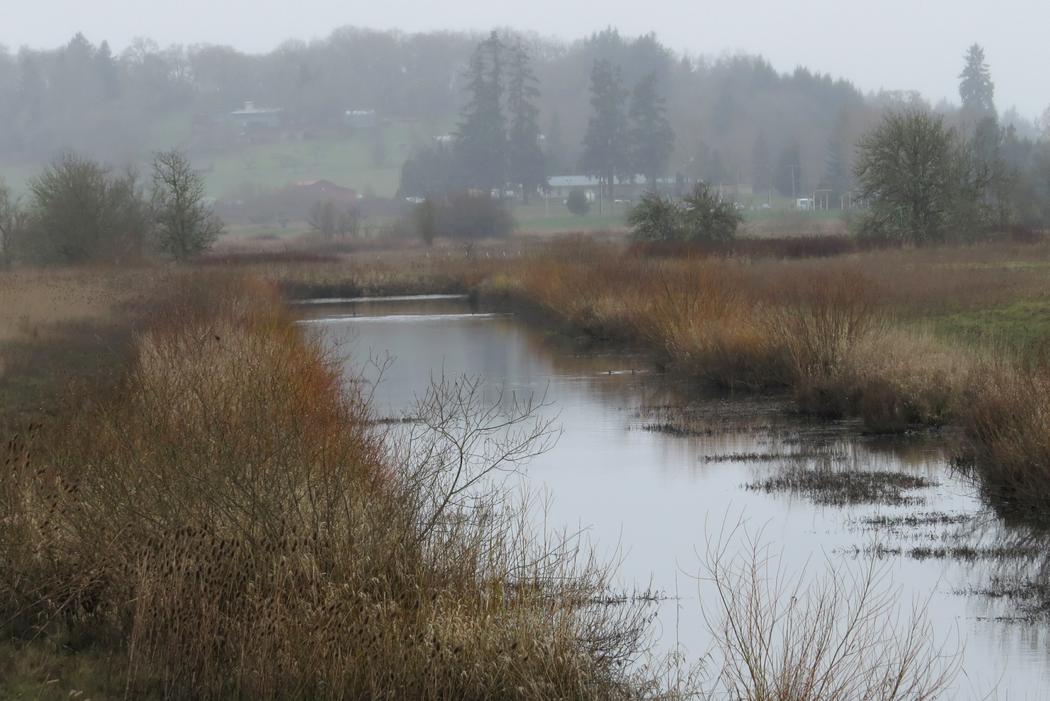

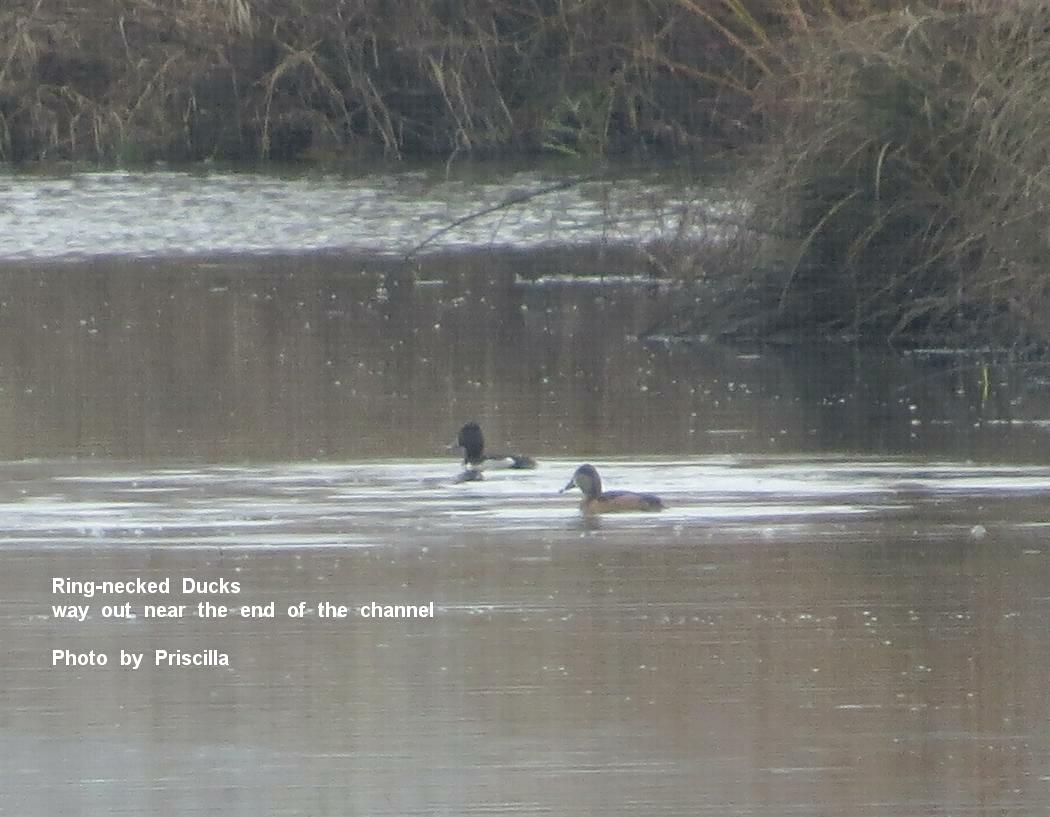

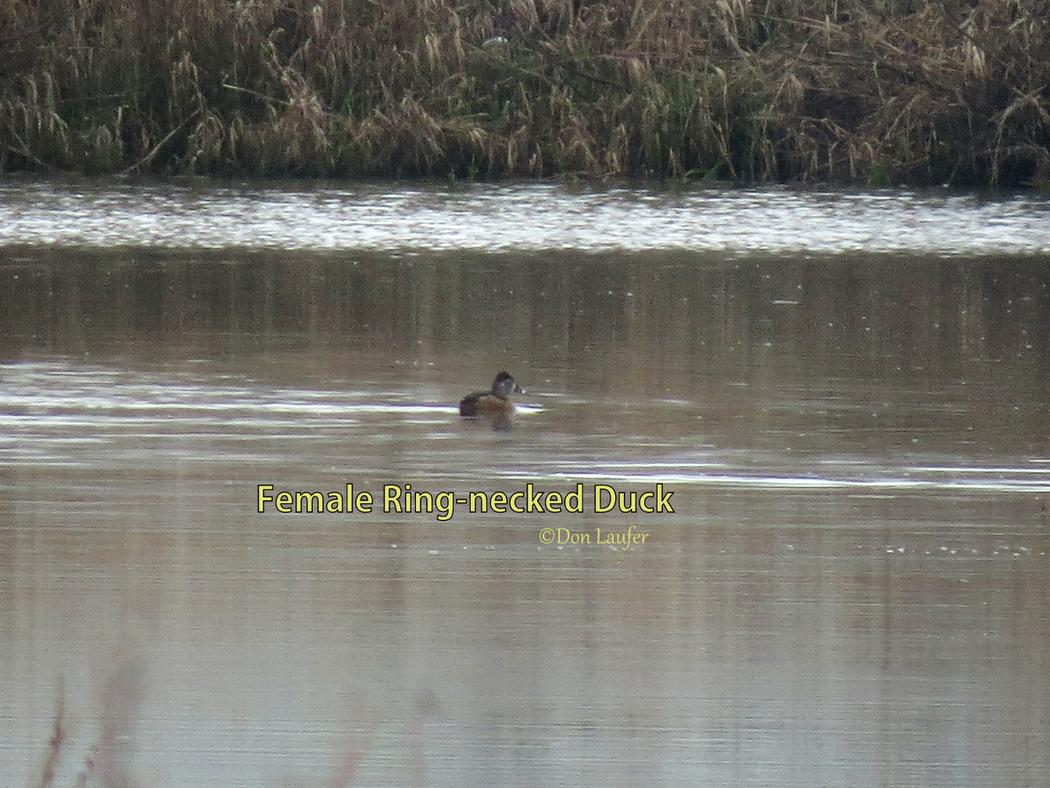
A Northern Harrier flew right over us at the bridge. I followed it with my binoculars and when it got down low and flew along the shoreline of the large pond on the east side of the path, it flushed a pair of birds which flew together very fast. They had long straight bills, pointed wings and a rapid wing beat. The wings were bent sharply in flight. They flew pretty high and fast over the path, some distance from us and kept going some distance to the west. All the "visuals" about these birds suggested "Snipe" to me, the way things just come to you sometimes without really knowing if you're right or not. I'm pretty sure they were snipe, because I looked into a field guide which showed a similar in-flight profile; and also, because ...
Just beyond the bridge over the channel, on the west side of the path, there was a pond. Steve somehow spotted a Wilson's Snipe lurking near the shallow water's edge. Some of the group saw it, but just as I got my camera on the bird, it flew a few feet and seemed to disappear into the grasses. Both Don and I took photos of the place we thought it had landed. I was able to see the long straight bill of the Snipe in one of my photos. The eye of the bird could also be seen. I asked Don to play around with the photo to see if he could bring out the bird a little better using Photoshop software. I've made a collage of the original side-by-side with the one he worked on.

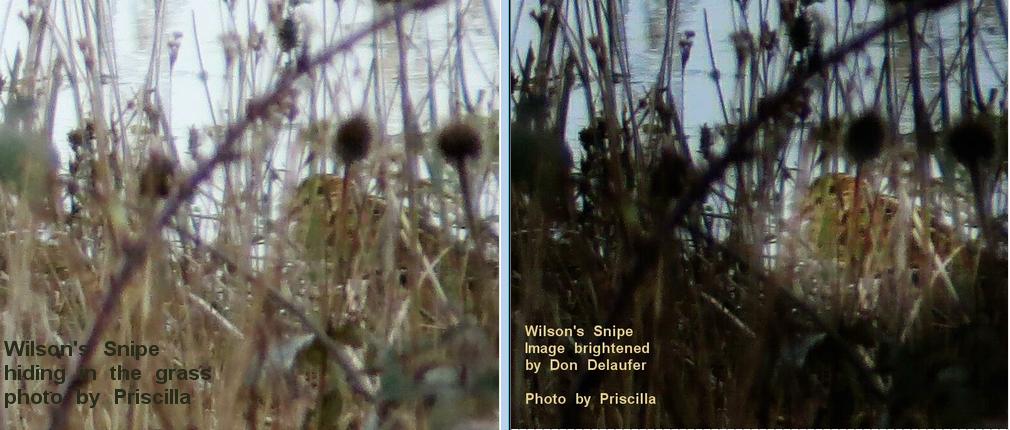
Before we got to where the bridge crossed over the channel, the light sprinkles began to get a little heavier. For a while they had been that fine mist that doesn't really get you wet, but now it was not to be entirely ignored. We took to putting on hats or hoods.
This photo makes me nostalgic because it was taken at about the same place as one of the very first pictures I ever took on a BOGS birdwalk, two or three years ago, in 2012 or 2013. I wasn't making photo albums and putting them online back then. I remember that photo also had Floyd in it with a spotting scope.

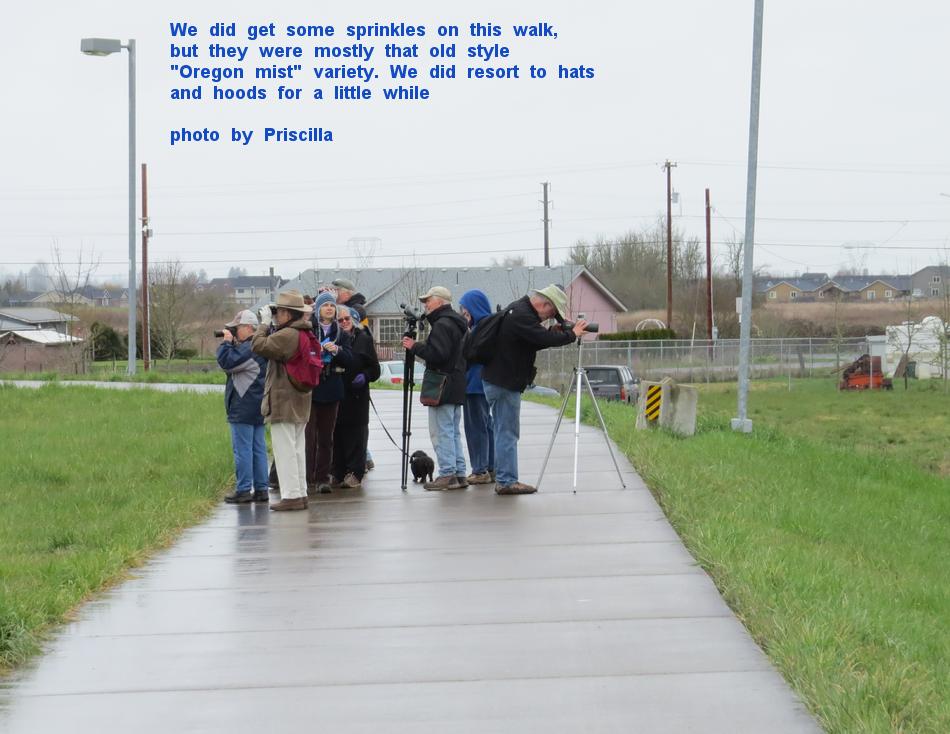
We saw some more Meadowlarks fly in to the grassy fields along the stream, making a last appearance. No one complained about seeing the brilliant yellow breasts of these birds again, nor about hearing them singing.


When we got back to where a trail winds down to the parking lot, I saw and photographed a Sparrow which I wasn't sure about. I had remembered that five Vesper Sparrows (I think it was Vespers) had been reported in this area only two days prior. So I chased down this bird for while, shooting down from the bridge to the stream and it's rocky and grassy banks below me. It turned out to be a Song Sparrow, but I think the viewing angle makes this photo interesting.

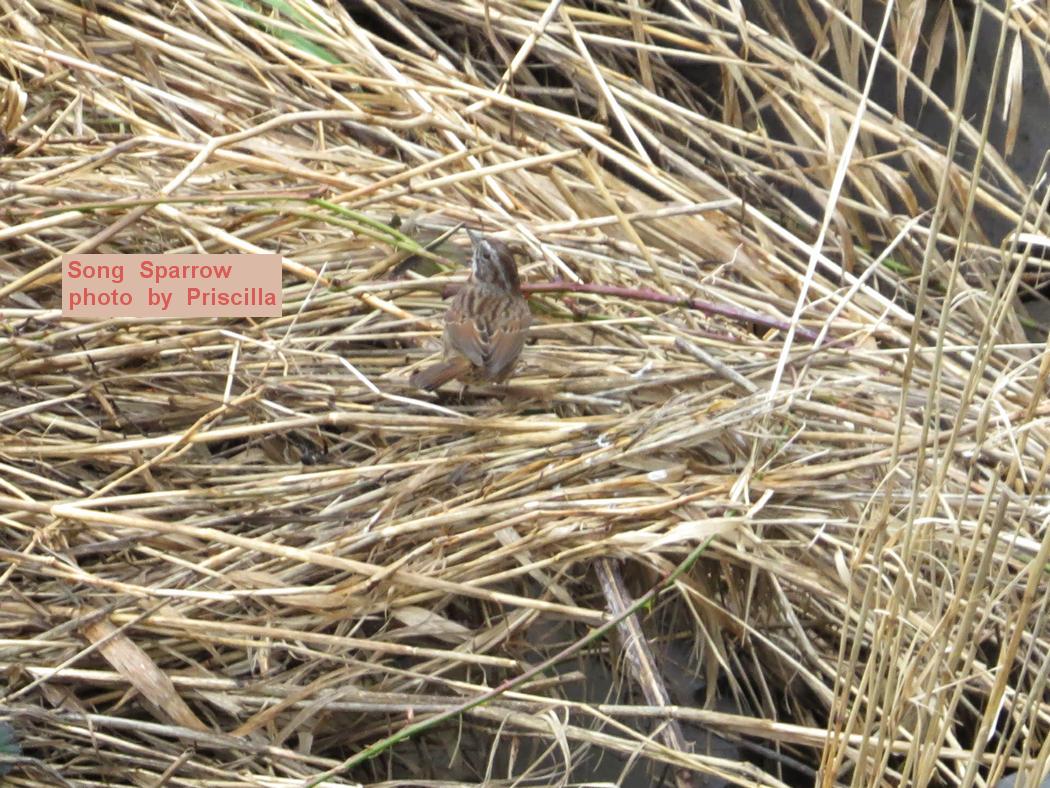
There was a flurry of action down near the parking area while I was chasing the Song Sparrow. Don got a photo of a House Sparrow, and that can be seen along with other additional photos of most of the birds we saw in the photo-album/slideshow at the link given below.
The Cackling Geese made one more pass as we got into our cars for the ride home.

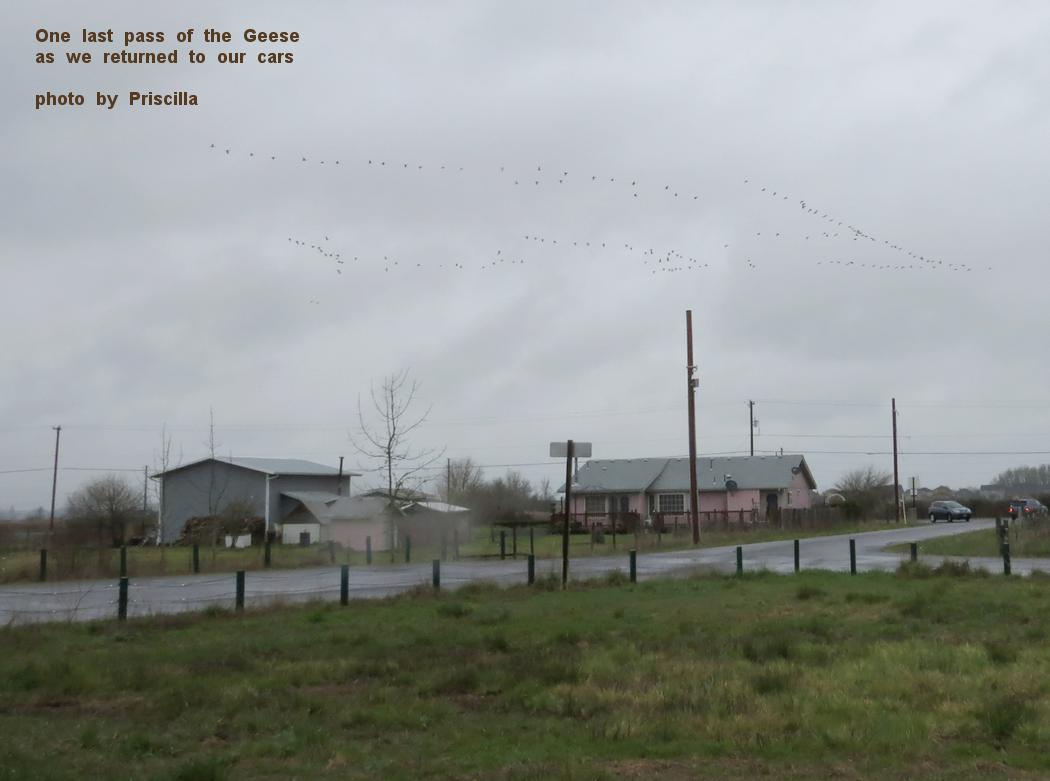
Bird list for walk at the Checkermallow area off Royal Ave., on February 26, 2015.
The weather was cool and cloudy, with some mists and short, light showers.
--- bird list compiled by Doris Wimber
- Pied-billed grebe
- Great blue heron
- Cackling goose
- Mallard
- Green-winged teal
- Northern pintail
- Ring-necked duck
- Northern harrier
- Red-tailed hawk
- American kestrel
- American coot
- Killdeer
- Wilson's snipe
- Gulls
- Mourning dove
- Northern flicker (yellow shafted?)
- American crow
- Marsh wren (heard)
- Ruby-crowned kinglet
- American robin
- European starling
- Yellow-rumped warbler
- Song sparrow
- White-crowned sparrow
- Golden-crowned sparrow
- Dark-eyed junco
- Western meadowlark
- Brewer's blackbird
- Red-winged blackbird
- House sparrow
The photo slide-show for this trip can be found here:
http://priscillanhk.com/bogs-checkermallow-2-26-15.html
Generally if you want to know what is happening next at BOGS, or want to see the latest photos/reports,
you can find these on my "updates" page:
http://priscillanhk.com/updates.html
Enjoy!
Priscilla